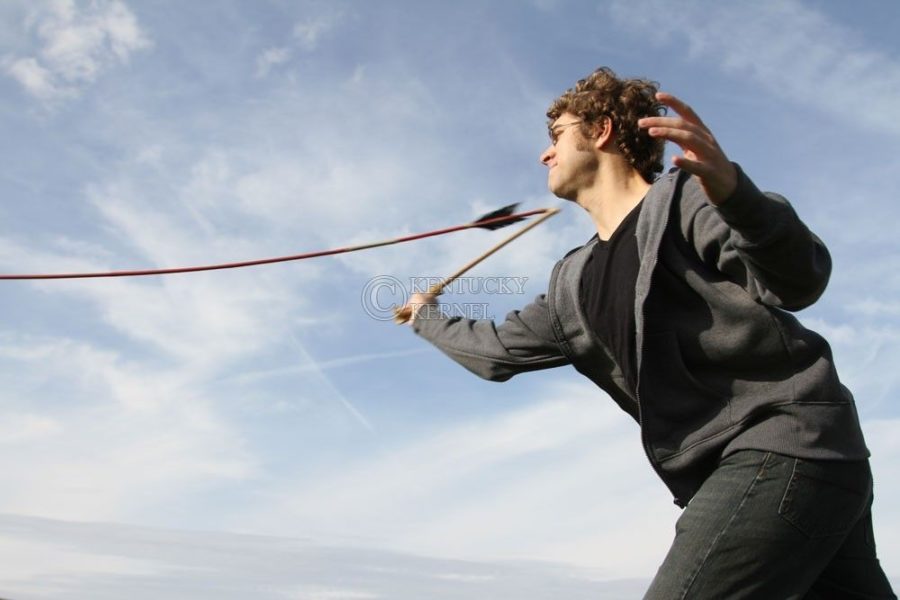UK club practices long-lost tradition, creates own hunting tool
November 22, 2011
Blasting techniques used from the past, a UK club puts a new spin on hunting methods.
The CATLATL club focuses on the art of a prehistoric way of hunting using a dart and an atlatl, a device that works as a lever for throwing spears and long arrows.
Hunting with the atlatl is illegal in Kentucky, so the CATLATL club uses a bulls eye target to practice throw seven-foot-long darts.
Brandon Ritchison, club president, said the atlatl device is long enough to extend your arm, and aids in throwing further and with more accuracy.
Many students were interested in starting an organization that would give them the opportunity to practice this art locally after viewing atlatl demonstrations on an anthropology club trip to Cahokia Mounds in Illinois, he said.
“We went on a personalized tour and there just so happened to be people throwing,” Lisa Jagoda, club secretary, said. “We all got to practice.”
Many of the club members agree that the motion of the arm used for throwing the darts is similar to that of throwing a baseball.
Generally, club members make their own throwing tools.
“It’s kind of hard because the materials are expensive and hard to make,” Ritchison said.
Typical prehistoric darts were made from materials such as river cane, aluminum and fishing pole material. The darts used by CATLATL are mostly made from different types of wood or cane.
Ritchison said the key to the dart is making sure it is balanced.
“We balance them optimally and make sure they have enough flex, which increases stability,” Ritchison said.
To balance the arrow, artificial sinew (a tissue used to connect muscle to bone or bone to bone) is wrapped around each end of the dart.
Prehistoric atlatls were also made from wood as well as bone and ivory.
Ritchison said atlatls can essentially be made from any type of material as long as there is a hook for the darts. Most CATLATL members make their atlatls from wood.
Club Treasurer Tiffany Patrick said some woods are heavier than others, which determine the force needed to throw.
“If the wood is heavier, more force is needed,” Patrick said. “If it is lighter and windy, you have to worry about it going off course.”
The club meets biweekly Tuesday evenings to plan times and specific locations to practice. The club also participates in other prehistoric activities that are of group interest.
“Since we have existed (as a club), we volunteer at the Living Archeology Weekend event,” Ritchison said. “We have demonstrations for about 800 fourth graders and 1,000 community people.”
Ritchison said this weekend there is a public education opportunity to learn about prehistoric and historic techniques.
“The demonstrations teach what people would have used to survive,” Ritchison said.
In the past, the Living Archeology Weekend has been held at Red River Gorge. Some of the demonstrations include: hot rock cooking, flint knapping (arrowhead making), leather working and mat weaving.
CATLATL has increased its membership since last year and is always looking for ways to reach out to new students.
Patrick said that once she explains what CATLATL is to people, they become interested.
Jagoda said being a member of the club has given her more of a respect for how hard it was for survival and feeding during prehistoric times.
“The hands-on archeology is the most fulfilling part,” Jagoda said.
Ritchison believes the best way for people to gain interest is to try it.
“People who have never heard of this come back and try it four more times,” Ritchison said.
CATLATL club plans to compete next semester and encourages students to join them on Facebook for more information about meetings. Students can also email Brandon Ritchison at btritc2@g.uky.edu with questions.
































































































































































